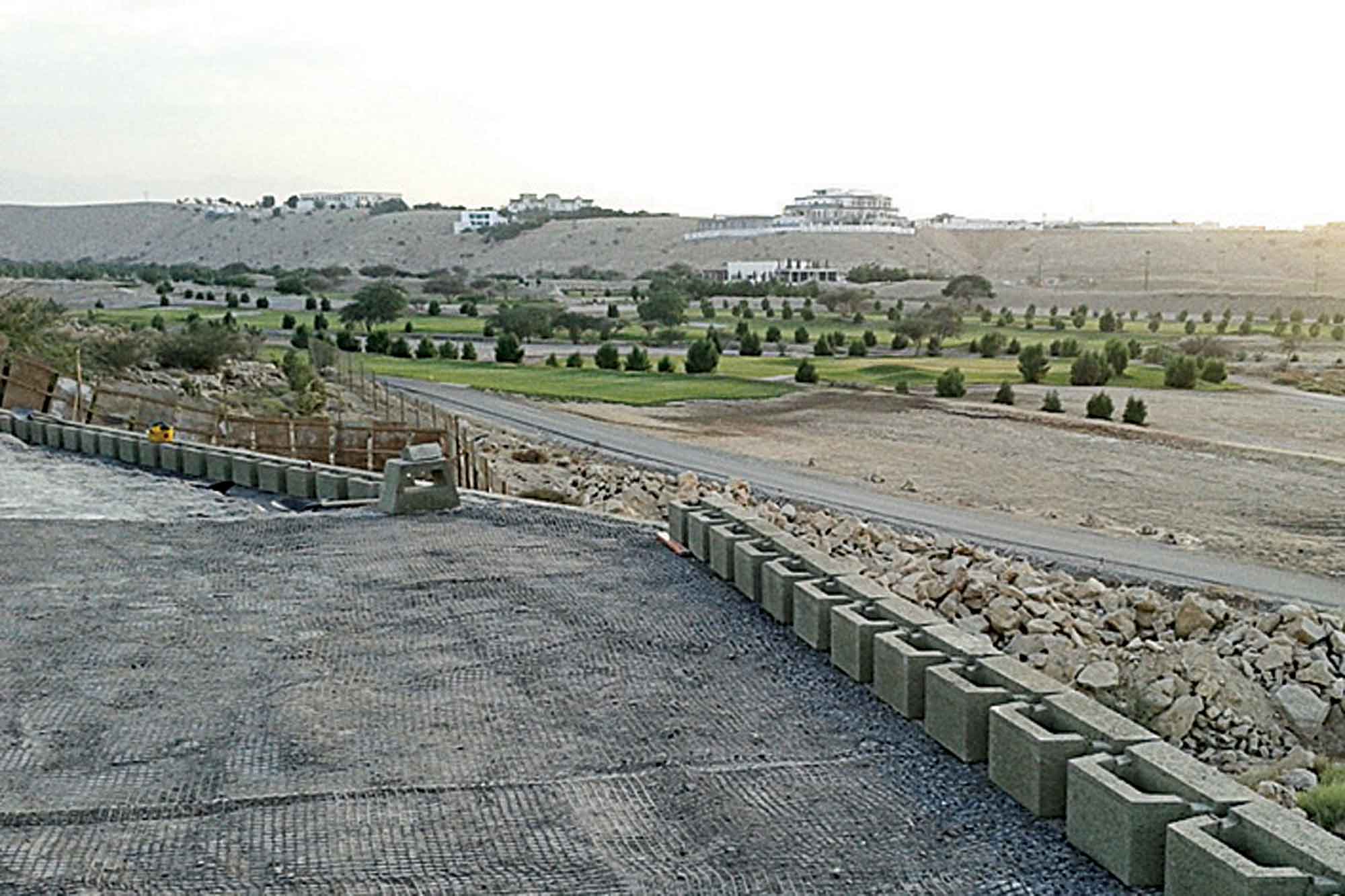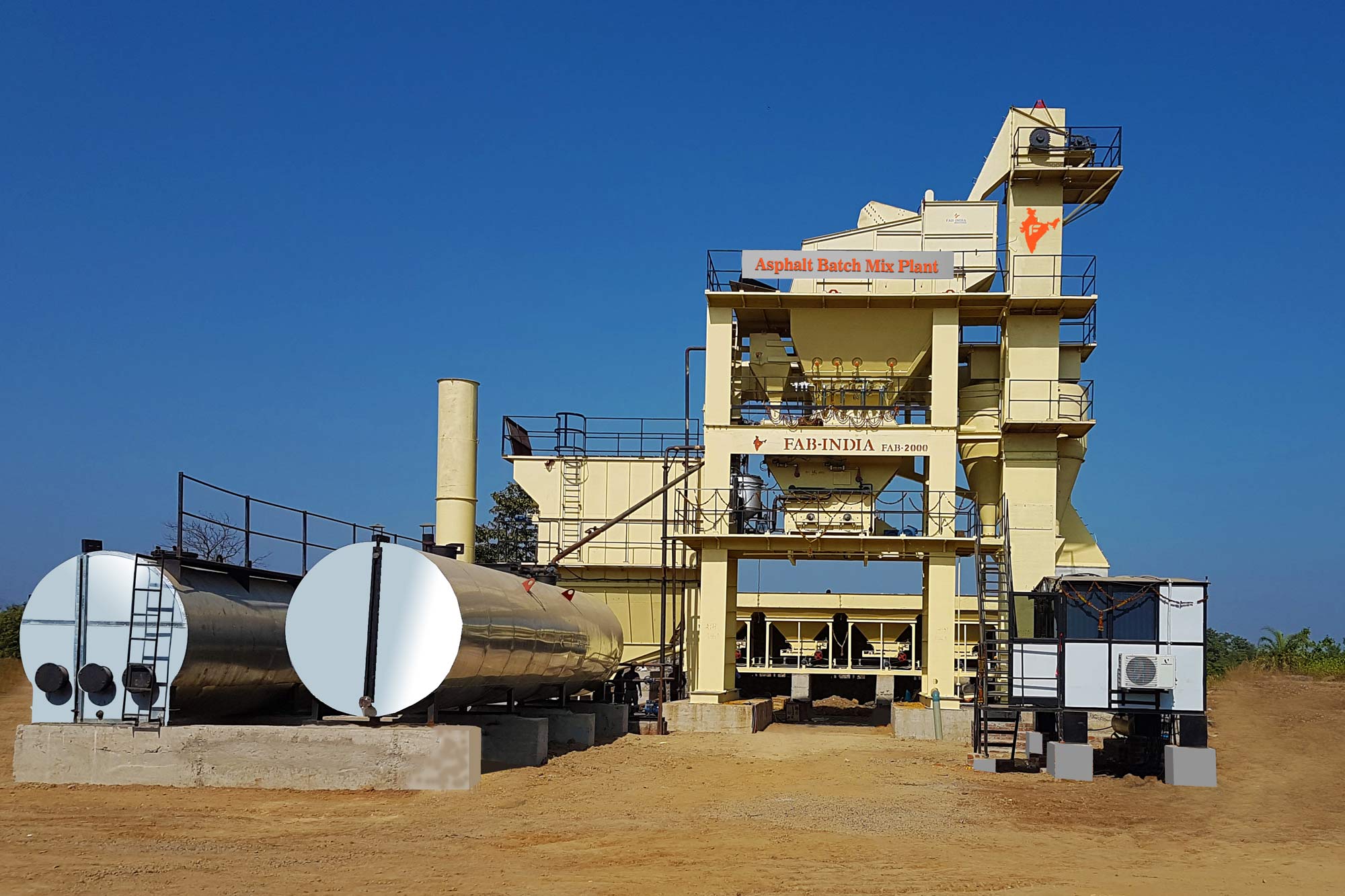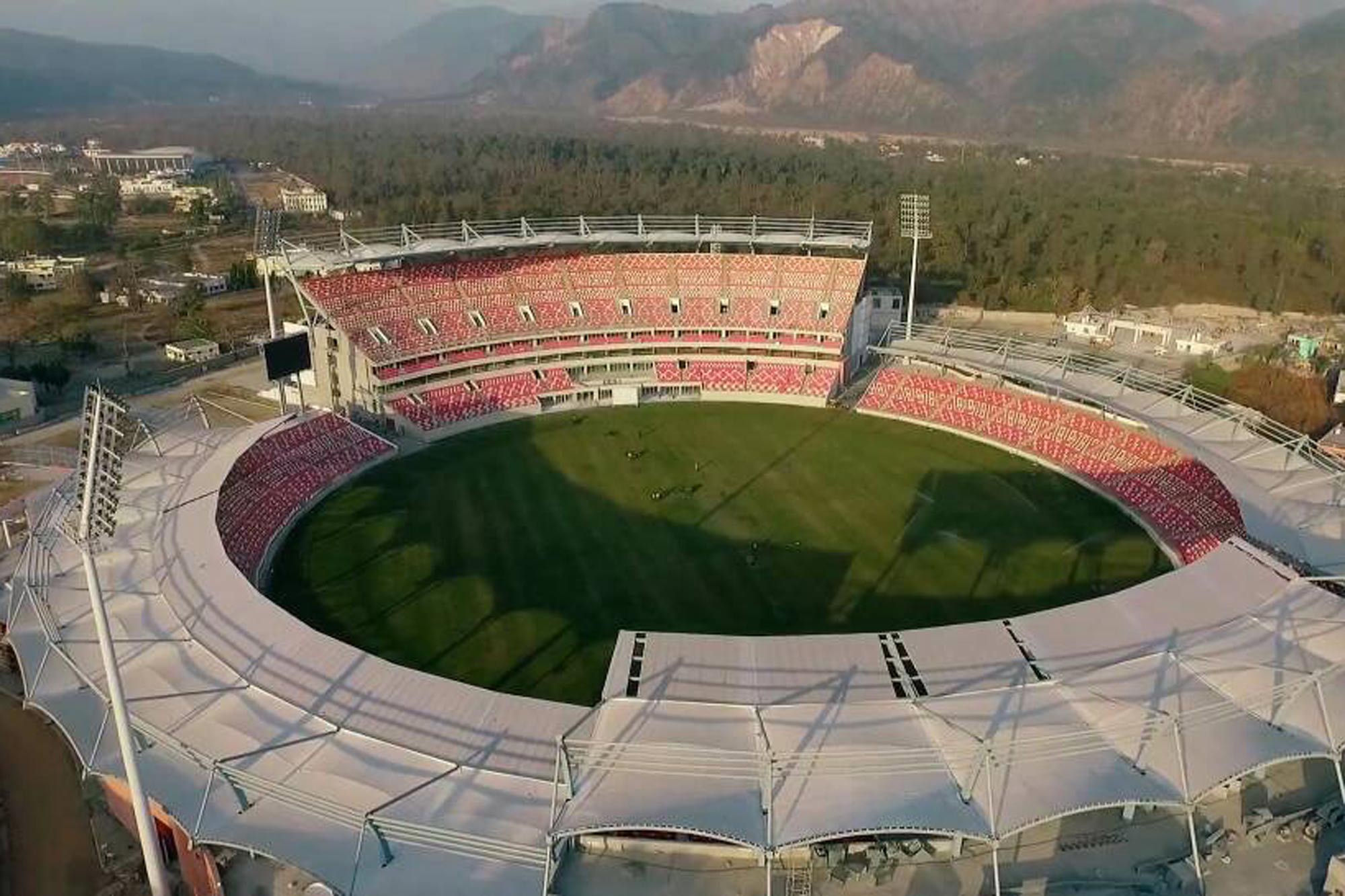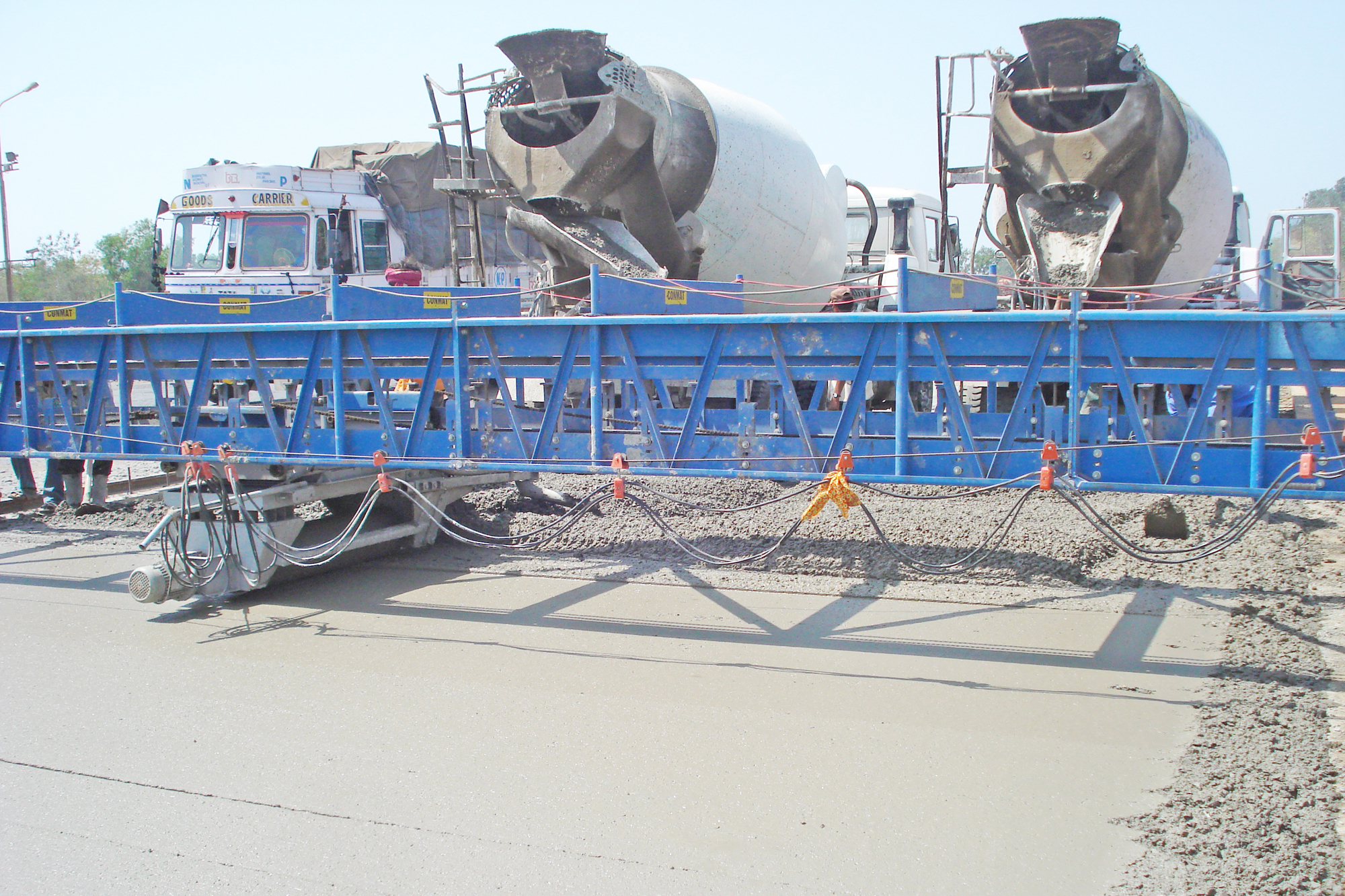What are the benefits of geosynthetics in road construction?
By Edit Team | February 20, 2017 12:14 pm SHARE

With the increasing pace of infrastructural development, geosynthetics has emerged as a new dimension in road construction. Here, we talk about the benefits of this new material in road construction.
In the present world, Infrastructural projects are booming at a very fast pace. For the speedy and safer execution of such projects like construction of roads and highways, vertical civil structures, there is a huge demand of geosynthetics. To counter these issues a number of ground improvement techniques and material are in practice.
Geosynthetics have a variety of uses from erosion control to reinforcement to improved subsurface drainage. One of the most common uses, however, is in road construction, particularly temporary roads such as construction roads, access roads and forest paths.
“Geosynthetics is a man made products. They are flexible and sheet type and are manufactured from synthetics polymeric materials and natural materials,” explains Ajay Menon, AGM – Marketing, Climax Synthetics Pvt Ltd. He further adds, “Geosynthetics are mainly classified into six main products: geotextile, geomembrane, geogrid, geocell, geonet and geocomposite. These Geosynthetics products are widely used for Geotechnical Engineering as separators, filters, drains, reinforcements, hydraulic barriers, protectors and erosion control systems.
”Expansive soil or destructive soil movements has affected many projects mainly transportation facilities throughout the world. These soils exhibit peculiar swell-shrink behaviour according to moisture level in different weather condition. To counter this movement geomembrane sheets are placed horizontally in roads which behave like a moisture barrier and as a separator between the soil and subgrade. Geomembrane has given a high success rate in improving the quality of roads and tracks throughout the world.
Geomembrane in combination with other Geosynthetics material (geocell, geogrid or geotextile) are commonly used for stability of bund and soil reinforcement during the construction of road or rail track in hillock or valley against erosion. Menon states, “Uses of geotextile bags in multiple layers, geocell, which is a honeycomb tree dimensional structure which will encapsulate the infill soil from being pushed away. Geogrid facilitate interlocking of soil/aggregate particles within their opening.”
Menon observes that all these geosynthetics materials have opened new horizon of engineering through which one can now build roads and rail tracks at faster speed and safer way to the remote and extreme geological condition.
Woven PolyesterGeogrid
Woven PolyesterGeogrid consists of a regular network of connected tensile elements made of high tensile polyester yarns with aperture geometry sufficient to permit significant mechanical interlock with the surrounding soil.
“The geogrid structure is dimensionally stand able to retain its geometry under manufacture, transport, and installation. The high tensile polyester yarn provides relatively high tensile strength at low strains, high modulus and low-creep potential. The apertures vary in size and provide an open area around 40 per cent. The openings in geogrids are rectangles in order to provide effective soil grid interaction. Geogrid is a tensile element introduced into soil, which is weak in tension and cannot bear loads beyond its capacity, where in the geogrid enhances the soils capacity to bear loads,” explains Amit Agarwal, Director, CTM Geosynthetics.
Manufacturing techniques are utilised where polyester woven Geogrid are constructed of high molecular weight and high tenacity polyester yarns utilising a complex weaving process using the best available weaving equipment in the world and optimum temperature PVC coating technology to provide superior engineering properties. Yarns are woven into a dimensionally stable, uniform network of apertures providing significant tensile reinforcement capacity. The Geogrid is engineered to be mechanically and chemically durable, in both the harsh construction installation phase and in aggressive soil environments (pH range from 2 – 10). The PVC UV stabilised coating provides further chemical and mechanical benefits.
Agarwal further explains, “Woven PolyesterGeogrid is broadly divided into two categories depending on the different tensile strengths along the two directions of the fabric as listed below. Both the polyester geogrids composed of high molecular weight, high tenacity multi-filament polyester yarns, and has a PVC coating which offers UV resistance and further strengthens the geogrid and minimises fiber degradation.”
Uniaxial Geogrid
Uniaxial Geogrid is manufactured with its tensile strength being higher in one direction so that it is used in applications where the major principal stress direction is known and the Geogrid is placed with its higher strength direction along the major principal stress direction.
Some of the applications of Uniaxial geogrids are:
- Reinforcement and stabilisation of embankment and side slope
- Retaining wall.
Biaxial Geogrid
Biaxial Geogrid has been manufactured with nominally equal tensile strength in two directions perpendicular to one another.
Some of the applications of biaxial geogrids are:
-
- Roadbed reinforcement of road and railway, crack prevention, increase of roadbed strength
- Dyke reinforcement on soft ground for stress evenness, sedimentation adjustment, increase of stability and loading capacity of foundation
- Soft soil reinforcement.
“The features of Geogrid includes high tensile strength at low elongation, high long-term design strength and it has excellent creep resistance with flexibility and durability. It also has increased pull-out resistance with high chemical and biological resistance. The most attractive feature is that is cost effective can be custom fabricated,” comments Agarwal.
Manas Geo Tech India Pvt Ltd is a one-stop solution provider for all your geo-synthetic needs, claims the company’s Director Kartik Kanodia. He highlights the following functions of geosynthetics in road construction:
Reinforcement
Geosynthetics like non-woven geotextile and geo grid, improve the overall strength of the soil. They also prevent lateral spreading of the base, increase the confinement and improve the vertical stress distribution of the sub-grade. The combined benefits can enhance load carrying capacity of the road by well over 50 per cent.
Separation
Non-woven geotextile helps in keeping the two layers of soil namely- subgrade and aggregate, apart; thus preventing mixing and in turn deterioration of their benefits in the structure. This also prevents contamination of the soil and helps each layer distinctly perform its function.
Drainage
Non-woven geotextile has very high permeability and allows water to flow freely along its plane into the side ditches. This function allows adequate liquid flow without soil loss.
Filtration
Use of geosynthetic allows adequate liquid flow across the plane of the geotextile. The apparent opening size (AOS) allows water to pass freely from the geotextile while preventing soil to pass through the same. This is due to the skilful manufacturing of the non-woven geotextile’s AOS, which is always kept less than the size of the finer soil particles.
Current market scenario
Speaking about the current market scenario of geotextile market globally, Kanodia says, “According to a study by Grand View Research Inc., the global geotextile market is expected to reach $ 8.24 billion by 2020. The market is growing at CAGR of 8.9 per cent from 2014 to 2020 and the requirement is predicted to reach 4,323 million square metres by 2020.” He concludes, “Asia Pacific is the largest geotextile consumer and is also expected to be the fastest growing regional market at an estimated CAGR of 9.1 per cent from 2014 to 2020. India is growing market in terms of its manufacturing and consumption. Benefits it offers to the infrastructure projects are unparallel. Thus the future of geosynthetics is nothing short than bright.”
Cookie Consent
We use cookies to personalize your experience. By continuing to visit this website you agree to our Terms & Conditions, Privacy Policy and Cookie Policy.




















































